《INTERNATIONAL LAW IN A DIVIDED WORLD》
| 作者 | 编者 |
|---|---|
| 出版 | CLARENDON PRESS·OXFORD |
| 参考页数 | 429 |
| 出版时间 | 1986(求助前请核对) 目录预览 |
| ISBN号 | 0198761945 — 求助条款 |
| PDF编号 | 812893938(仅供预览,未存储实际文件) |
| 求助格式 | 扫描PDF(若分多册发行,每次仅能受理1册) |

SECTION Ⅰ.ORIGIN AND FOUNDATIONS OF THE INTERNATIONAL COMMUNITY9
1.Main Legal Features of the International Community9
Nature of International Legal Subjects9
Collective Responsibility11
Lack of Any Central Authority Wielding Exclusive Power:Consequent Decentralization of the Main Legal Functions13
The Need for International Law to Rely Heavily on Domestic Legal Systems14
The Range of States'Freedom of Action22
The Overriding Role of Effectiveness26
Individualistic Trends28
Coexistence of Old and New Patterns30
The International Community:A Divided World32
2.Historical Evolution of the International Community:The Former Setting(1648-1918)34
Birth of the Present International Community after the Peace of Westphalia(1648)34
Stage 1:From the Peace of Westphalia to the First World War38
Composition of the International Community38
Allocation of Power43
Legal Output46
Main Features of the Law47
Efforts to Restrain Great Powers'Dominance50
Rise and Fall of Slavery52
3.Historical Evolution of the International Community:The New Setting(from 1918 to the Present)55
The Subsequent Evolution of the International Community55
Stage 2:From the First to the Second World War57
The Turning-point:The First World War and its Consequences57
The Soviet Union's Presence Splits the International Community58
Another Experiment in Collective Co-ordination of Force:The League of Nations60
Legal Output62
Stage 3:From the UN Charter to the Accession of Most Formerly Dependent Countries to Political Independence(1945-60)64
The Consequences of the Second World War64
Composition of the International Community67
The Attempt at Institutionalizing the Pre-eminence of Great Powers68
The International Legal System in Transition69
Stage 4:From the Expansion of the Third World(1960)to the Present Day70
Composition of the International Community70
Legal Change72
4.International Legal Subjects74
General74
Categories of International Subjects76
Traditional Subjects77
States77
Insurgents81
New Subjects85
International Organizations85
Peoples under Colonial,Alien,or Racist Domination,Endowed with a Representative Organization(National Liberation Movements)90
Individuals99
Multinational Corporations:Are They International Subjects?103
Concluding Observations103
5.Attitudes of States Towards International Law105
General105
Western Countries106
Socialist States109
Developing Countries115
Concluding Remarks123
6.The Fundamental Principles Governing International Relations126
Introduction126
Sovereign Equality of States129
Self-determination of Peoples131
Prohibition of the Threat or Use of Force137
Peaceful Settlement ofDisputes142
Non-intervention in the Internal or External Affairs of Other States143
Respect for Human Rights148
International Co-operation150
Good Faith152
Distinguishing Traits of the Principles157
The Close Link Between the Principles and the Need for Their Co-ordination160
Concluding Remarks163
SECTION Ⅱ.CREATION AND EFFECTIVENESS OF INTERNATIONAL STANDARDS169
7.International Law-making169
Historical Evolution169
The Traditional Law-Making Processes:Custom and Treaties169
The Attempt at Expanding the Traditional Law-Making Processes in 1921:the General Principles of Law Recognized by Civilized Countries170
The Attempt at Granting Legislative Powers to the UN General Assembly in the late 1950s174
The Upgrading of Certain Fundamental Rules Produced by Traditional Sources of Law:The Introduction of Jus Cogens in the 1960s175
Present Sources of International Law179
General179
Custom180
Treaties185
The'Old'and the'New'Law186
The Role of General Assembly Resolutions in Law-making192
Consensus as a Means of Facilitating Agreement within International Organizations and Diplomatic Conferences in an Age of Deep Divisions195
International Law-making in a Divided World198
5.Settlement of Disputes200
Introduction200
Traditional Means of Settlement201
New Devices for Promoting Compliance with International Law207
Handling of Disputes by UN Organs207
International Supervision208
Compulsory Conciliation or Adjudication211
Conclusions213
9.Enforcement215
Introduction215
Traditional Law215
Intervention217
Reprisals219
War221
New Trends Following the First World War221
The New Law222
An Overview222
Collective Enforcement224
Enforcement by Individual States229
Coercive Enforcement230
Non-coercive Enforcement241
Recapitulation and Conclusion246
SECTION Ⅲ.CRUCIAL ISSUES OF TODAY253
10.International Legal Regulation of Armed Conflict253
Introduction253
Classes of War255
Traditional Law in a Nutshell257
New Developments in Modern Armed Conflict262
The New Law264
General264
Fundamentals of the Current Regulation of Armed Conflict266
Interstate Conflicts266
Conduct of Hostilities269
Protection of War Victims273
Means of Ensuring Compliance with Law274
Wars of National Liberation277
The Assimilation of Wars of National Liberation to International Conflicts277
Jus in bello279
Internal Armed Conflict280
General Features of the Legal Regulation of Civil Strife280
Customary Law281
Treaty Law284
Concluding Remarks285
11.International Protection of Human Dignity287
Introduction:The Birth,After the Second World War,of International Concern for Human Rights287
International Prohibition of Crimes against Humanity290
The International Protection of Human Rights by the UN293
The UN Charter293
Evolution of the U N Action296
The First Stage of International Protection of Human Rights(1945 to the late 1950s)297
The Influence of the Western'Doctrine'of Human Rights297
Moving Towards International Legislation298
The Tendency to Overrule the Objection of Domestic Jurisdiction300
The Cold War300
The Second Stage(1960 to the mid-1970s)300
The Socialist'Doctrine'300
International Legislation302
Supervision304
The U N's Widening Sphere of Action and Increasing Disregard of Domestic Jurisdiction306
The Third Stage(the mid-1970s to the Present Day)307
The Third World'Doctrine'of Human Rights307
Virtues and Defects of the Developing Countries'Strategy309
International Legislation and Control310
UN Action:Tentative Stock-taking311
Comparison and Contrast Between the Different'Philosophies'of Human Rights311
Legislative and Institutional Achievements313
Final Remarks315
12.The Law Governing International Economic Relations317
General317
Predominance of the Laissez-faire Principle Until the First World War317
The Inter-war Period320
The Major Turning-point After the Second World War:The Dominance of the U S and Its Neo-Liberal Outlook325
Promotion of Currency Stability:The International Monetary Fund326
Duties of the Member States327
The Right to Draw Foreign Currency from the Fund328
The Organizational and Power Structure of the Fund328
The Evolution of the IMF329
The Contribution of the IM F to Free Trade332
Mobilization of International Capital:The Bank for International Reconstruction and Development333
Criticism by Socialist and Third World Countries334
The Practical Results of Third World Criticism:The Establishment of the IFCandthe IDA337
The International Finance Corporation337
The International Development Association338
Liberalization of International Trade:The General Agreement on Tariffs and Trade339
The Position of Socialist and Developing Countries343
The Evolution of the International Regulation Protecting Foreign Investment345
Concluding Observations349
13.International Promotion of Development351
The Traditional Setting351
The Main Features of Developing Countries'Economic Structure352
The Emergence After the Second World War of a Drive Towards Assisting Less-developed Countries355
Stage 1(1946 to the early 1960s):Technical and Financial Assistance356
Stage 2(from the early 1960s to 1973):Trade Not Aid358
Stage 3(1974 to the Present):The New International Economic Order364
The Attempt to Supplement the NIEO by Introducing the Right to Development368
A Tentative Stock-taking371
14.From Sovereignty to Co-operation:The Common Heritage of Mankind376
General376
Traditional Principles Concerning the Appropriation of Territories376
The Modern Extension of State Sovereignty:The Continental Shelf,The Contiguous Zone,The Exclusive Economic Zone377
The Concept of'Common Heritage of Mankind'as a New Guiding Principle for the Joint Exploitation of Natural Resources379
The Emergence of the Concept379
The Common Heritage of Mankind Concept in the 1982 Convention on the Law of the Sea384
The Moon and Other Celestial Bodies as Common Heritage of Mankind387
Concluding Remarks391
15.Epilogue393
General393
International Law in a Deeply Divided World:Differences and Convergences among the Main Groups of States393
The Old and the New Patterns of World Legal Order396
The Role of Law in the World Community407
The Possible Contribution of Individuals and Private Groups413
Select Bibliography418
Index423
1986《INTERNATIONAL LAW IN A DIVIDED WORLD》由于是年代较久的资料都绝版了,几乎不可能购买到实物。如果大家为了学习确实需要,可向博主求助其电子版PDF文件(由 1986 CLARENDON PRESS·OXFORD 出版的版本) 。对合法合规的求助,我会当即受理并将下载地址发送给你。
高度相关资料
-

- RECOGNITION IN INTERNATIONAL LAW
- 1947 CAMBRIDGE AT THE UNIVERSITY PRESS
-

- A GENERATION DIVIDED
- 1999 UNIVERSITY OF CALIFORNIA PRESS
-

- A HOUSE DIVIDED
- 1935 REYNAL & HITCHCOCK NEW YORK
-
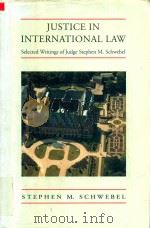
- Justice in International Law
- 1994 Grotius Publications
-
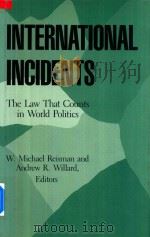
- International Incidents the Law That Counts in World Politics
- 1988 Princeton University Press
-

- STUDIES IN INTERNATIONAL LAW
- 1973 CLARENDON PRESS
-
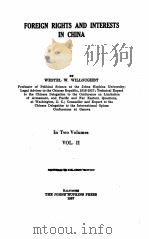
- FOREIGN RIGHTS AND INTERESTS IN CHINA VOLUME II
- 1927 THE JOHNS HOPKINS PRESS
-
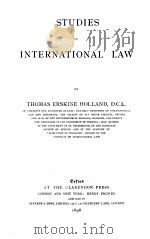
- STUDIES IN INTERNATIONAL LAW
- 1898 AT THE CLARENDON PRESS
-
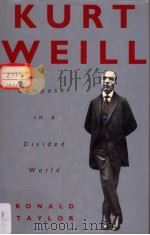
- KURT WEILL Composer in a Divided World
- 1991 SIMON & SCHUSTER
-

- THE WORLD ECONOMY A TEXTBOOK IN INTERNATIONAL ECONOMICS A TEXTBOOK IN INTERNATIONAL ECONOMICS
- 1991 HARVESTER WHEATSHEAF
-
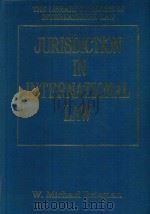
- Jurisdiction in International Law
- 1999 Ashgate/Dartmouth
提示:百度云已更名为百度网盘(百度盘),天翼云盘、微盘下载地址……暂未提供。➥ PDF文字可复制化或转WORD



